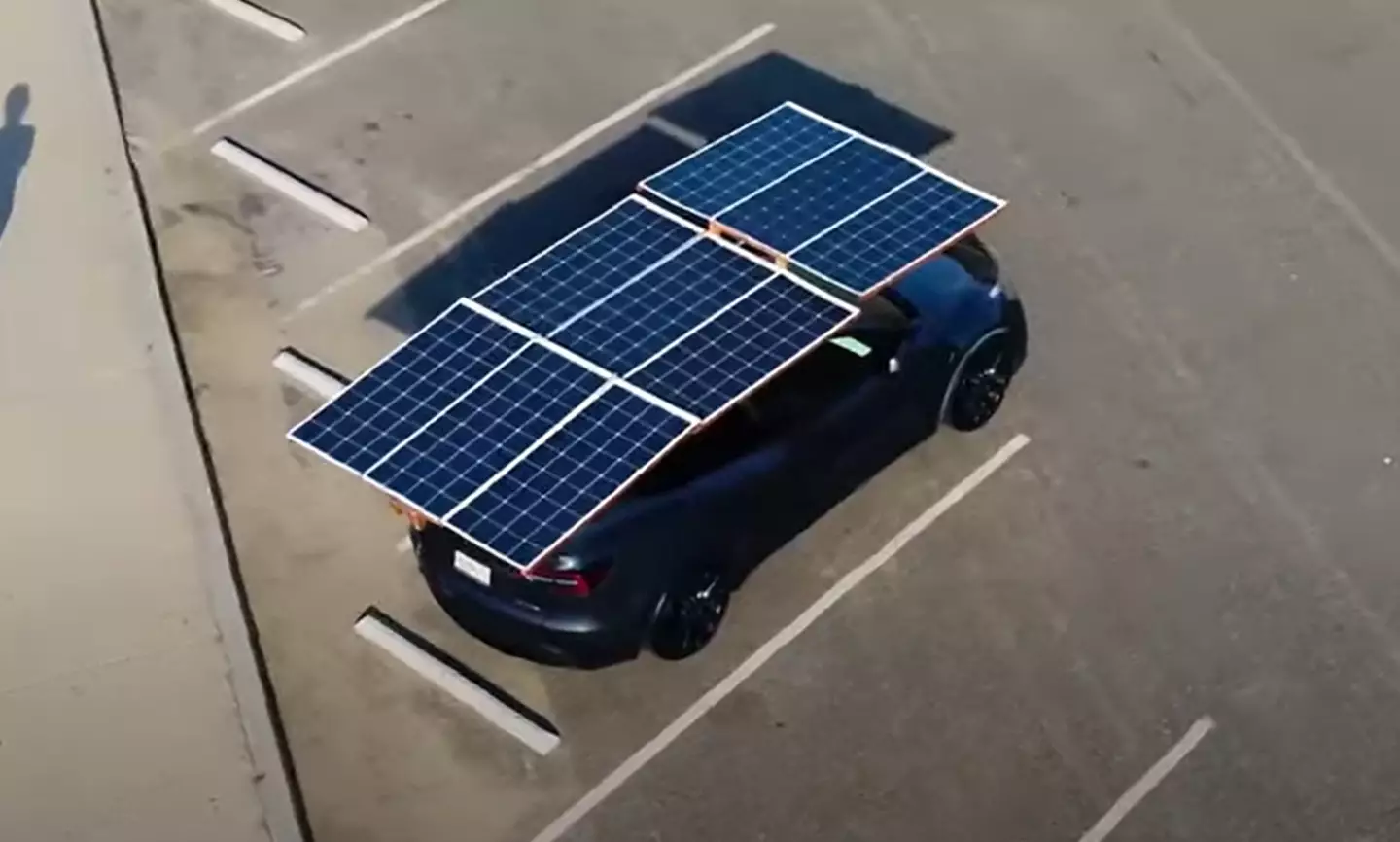
Designers have long dreamt of layering solar panels onto car roofs.
In theory, it sounds like a win-win - it's not like you're doing anything else with the space, and it could help power EVs.
While there have been plenty of long-distance races completed by cars with solar elements like this, precious few are road-legal, and the list of actual car manufacturers allowing this sort of option for real customers is vanishingly thin - with Tesla one of the many who don't.

Advert
Elon Musk talked about the idea back in 2017, but concluded it wasn't cost-effective at that point.
The idea is obvious - the roof of your car is in the sun or natural light all day (unless it's in a garage) so could be gathering solar energy as you drive to extend your car's range - it's literally free energy.
In an attempt to see whether this system could work on a real, drivable ,commuter-friendly car, YouTuber DartSolar took things into his own hands.
His 20-minute video shows how he went from having the idea to actually building a folding-out array of nine solar panels to go on top of their Tesla Model Y.
Advert
It's a fascinating process, involving more than a little engineering and fabrication. This means it's not exactly a guide if you want to try it yourself, and the results are really interesting.
We can't pretend they look great when folded out, of course - the panels are squared off, and basically just sit on top of the car like a big plank of wood.
Still, DartSolar's calculations and experiments suggest that, on a sunny day, he could gain anywhere from 20 to 75 miles of extra range for his Tesla, accounting for different conditions.

Advert
That means that people could potentially run their whole commute to and from work without ever using energy from the grid - an exciting prospect for anyone keen on renewable energy.
Of course, how well this kind of thing works would totally depend on where you live - someone living in California will likely get a lot more charge than anyone driving round in Scotland.
It looks a bit rudimentary at the moment, but we can only hope this sparks a bit of inspiration - and engineers will start thinking about how to make this dream a reality for the rest of us.